Last updated June 5, 2025
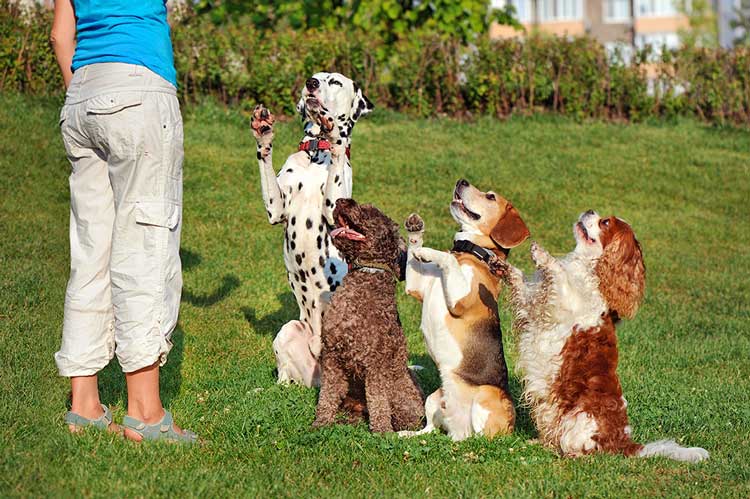
Some 65 million Americans have pet dogs. While all these mutts, mastiffs, and poodles provide joy and love, some pups need help learning how to sit, stay, or stop barking (or lunging) at strangers.
Finding the right trainer for your pup can be difficult because there’s no one method—or even certifying organization—to assure that you’re sending your dog to a gentle, results-driven pro versus an inexperienced trainer or someone who uses harsh methods and gets poor results.
Take time to evaluate potential trainers before trusting them with your cash and your beloved pal. Here’s how to find a good one, and what you need to do to achieve the best results.
Does Your Dog Need Training?
Every dog, from the littlest puppy to the oldest rescue, can benefit from training, said Kathy Santo, master trainer for the American Kennel Club’s digital network, AKC.tv, and author of Kathy Santo’s Dog Sense. “They’re like toddlers; they need to know how to communicate with us,” she said.
“Dogs aren’t prewired to do things to keep themselves safe—to come when called to avoid being hit by a car, to not grab something that fell on the ground that could hurt them, like pills or chocolate,” Santo said.
A trainer can help a puppy or young dog learn manners and how to cooperate with their human companion, especially if that person is a new dog owner. And dogs need supervised play time with other puppies, which they get in a puppy obedience class.
If a dog is displaying disturbing behaviors (biting people, aggressively guarding their food), a trainer can also help. But first, see your vet in case the problem stems from an underlying health concern.
If you want to teach your dog cool new skills—sports, agility, retrieving in water, or even dancing—skilled trainers can assist.
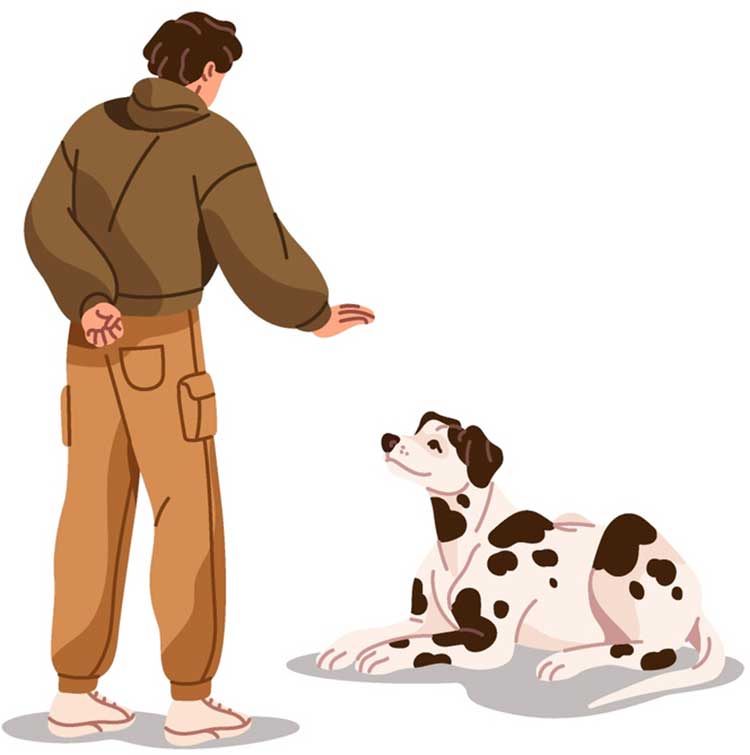
In Search of a Trainer
There’s no central repository listing dog trainers. So pet owners often find the best ones by word of mouth. Santo suggests starting by asking friends or neighbors who have well-behaved pets where they sought training. Your vet or dog groomer can also probably name a few stellar local pros. At Checkbook.org you’ll find ratings from our members on trainers they used.
Some professional dog-training associations and groups provide lists of trainers by regions, too. The Certification Council for Professional Dog Trainers (CCPDT) and the Pet Professional Accreditation Board (PPAB) seem to require meaningful testing and education before they provide certification.
- CCPDT offers two levels of certification: Certified Professional Dog Trainer-Knowledge Assessed (CPDT-KA) and Certified Professional Dog Trainer-Knowledge and Skills Assessed (CPDT-KSA). Candidates for both certifications must pass a multiple-choice exam focused on applied learning theory, instructional and teaching skills, canine behavior, professional skills, ethics, and laws and regulations. The more advanced certification also requires candidates submit four video recordings which are graded by subject-matter experts who scrutinize trainers’ skills, training equipment, and application of CCPDT training policies and position statements. Access CCPDT’s list of accredited trainers here.
- PPAB certifies dog trainers as Canine Training Technicians, Professional Canine Trainers, or Professional Canine Behavior Consultants. To determine eligibility, candidates must pass an online, third party-proctored exam assessing academic knowledge. The more advanced “professional” certifications also require trainers to submit videos proving training skills, and to send in written case studies for review. See a list of PPAB accredited trainers here.
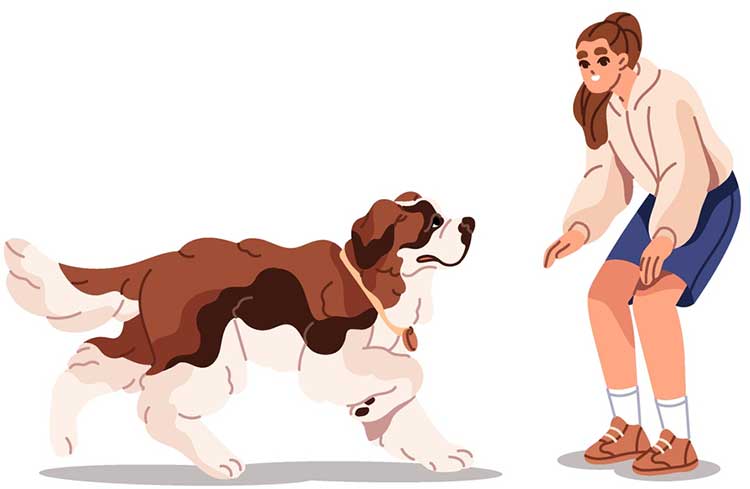
What to Ask a Pet Trainer
Once you pinpoint a few promising trainers, schedule calls or visits with them to drill down on their education, credentials, and vibe.
Ask each if they went to a dog training school or acquired an advanced degree in learning psychology or animal behavior. Or are they self-taught and have done apprenticeships? Has the trainer earned certification?
Also find out how the trainer plans to motivate your dog. “If they say food, play, and praise, excellent—they’re in the 21st century,” said Jean Donaldson, animal behavior expert, founder of The Academy for Dog Trainers, and author of several books on dog training. “If you [are] told about special collars that deliver prongs or choking or electric shock, run the other way. No reputable trainer uses that stuff anymore.”
According to the American Veterinary Society of Animal Behavior (AVSAB), modern studies on dog training indicate that reward-based methods have a clear advantage over aversive-based methods when it comes to immediate and long-term animal welfare, training effectiveness, and the dog-human relationship. Plus they strengthen the dog-owner bond, spurring your pooch to love learning.
Research also shows that “force methods,” which rely on yelling, pain or fear to change behavior, increase fear and aggression in dogs and cause their relationship with their human to suffer.
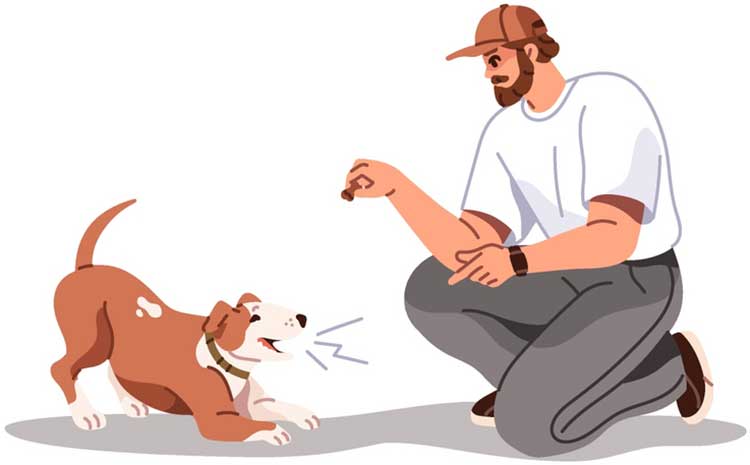
Sample a Class, Seek Reviews
To observe a few dog trainers in action, ask those who offer group lessons whether you can visit a class. Attend it, then pay close attention to how they communicate during the class. Are they kind? Do they put you at ease? Are they happy to answer questions or do they seem impatient? Are they teaching the humans about how dogs think? Are they instructing in a way all the human students can understand, or are they throwing a lot of science jargon at the class? How’s the overall atmosphere?
All of this matters because the trainer will be training you as well, and you may be using them on and off throughout your dog’s life. You need to like them.
“It’s important for dog trainers to be good teachers of people and to have empathy for their clients,” said Zazie Todd, an animal behavior expert and author of Bark! The Science of Helping Your Anxious, Fearful, or Reactive Dog.
She added, “Having a dog with behavior issues can be really hard, so you need a trainer with good people skills who will coach you through what to do.”
As you leave the trial class, walk out with clients and ask them what they do and don’t like about the trainer’s methods.
Many trainers create Facebook communities for their clients. Before hiring a particular trainer, ask to join their Facebook group, then read over the posts, and direct message people to ask about their experiences.
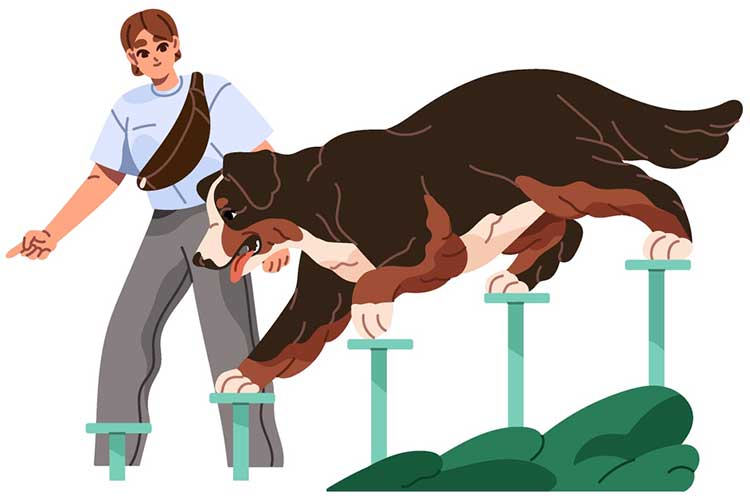
What’ll it Cost You?
The cost of dog training depends on where you live, what the trainer’s credentials are, and whether you choose one-one-one training or group classes. The average prices for one-on-one consultations of 60 to 90 minutes are about $150 to $190; follow-up sessions usually cost a bit less. Group classes usually run $25 to $75 per session; you can often purchase a package that includes follow-up consultations. Some dog trainers also offer virtual consultations, which can cut costs.
Additionally, if you have pet insurance, check whether it covers behavioral issues.
Types of Training
Group obedience training classes
Owners and pooches attend together, helping dogs get socialized and learn good manners around other canines and people.
Santos said she likes puppies to start as early as eight weeks. “If you wait until 14 to 16 weeks, they’re almost an adolescent and bad habits will have already started to set in.”
Group training is the least expensive type of training. In general, dogs will learn skills like sit, lay down, stay, come, and shake, and the owners will learn how to continue teaching skills at home.
The downside? Group sessions aren’t great for reactive, fearful or aggressive dogs who will lunge at other animals or for pets triggered by issues unique to your home, like people ringing the doorbell or other pets visiting the house.
One-on-one training
Trainers dig deep with each dog, coming up with a customized plan either at their own facility, the client’s home, or elsewhere (say, the neighborhood park). Solo school is the best option for dogs with aggressive behavior issues. It’s also a highly effective way to help your pet with pressure points in their environments—their food bowl, their crate, their yard, their neighborhood walks.
Still, one-on-one training can be expensive and won’t teach your pup to get along with other animals.
Online training
After a few initial in-person sessions, some trainers offer remote training; others are fully remote, conducting all sessions via video chat. But experts emphasize online training can’t convey important subtleties—such as hand position when issuing commands and dogs’ subtle reactions to their human’s cues.
Plus, said Santo, “I think being in person motivates you. It holds you accountable.”
Remote training
This involves sending your dog to another city or state for training, either on general obedience, to curb behavioral problems or to learn specific skills. They may stay for days, weeks or more. This can be paired with boarding—go on a vacation, then return to a better-behaved pet.
Still there are downsides, since owners can’t witness methods the trainer is using and learn along with their dogs. Follow-up sessions, if needed, can be challenging since the trainer is so far away. If your dog is kept in a kennel during training, what they learned while away may not translate easily to their home.
Special skills training
This exists for dog owners who want to teach their canine companions to participate in a sport, retrieve ducks that have been shot by a hunter, understand how to complete an agility course, learn to detect scents, serve as a therapy dog, and even to dance with you.
This type of training can be expensive and time consuming, since owners must also come to “school.”
Ultimately, your dog trainer and the type of training they offer need to be right for you, your canine companion and what you’re trying to achieve. But the investment should enable you and your now well-mannered dog to better enjoy your time together.
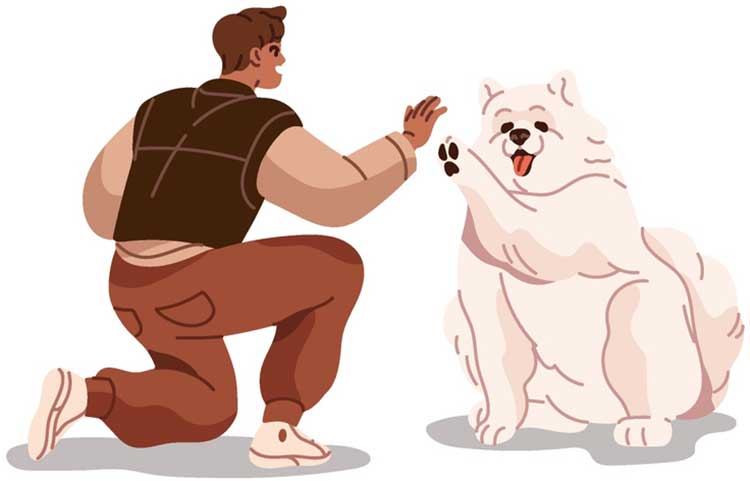
Doing Your Part
Professional training helps you and your dog begin to communicate more effectively. And once training starts, consistency is key. As you learn together, your pet has to trust that your reaction to their behavior today will be the same tomorrow.
“You can’t scold a dog for jumping on you today, then praise it the next day,” Santo said. “That just confuses them.”


